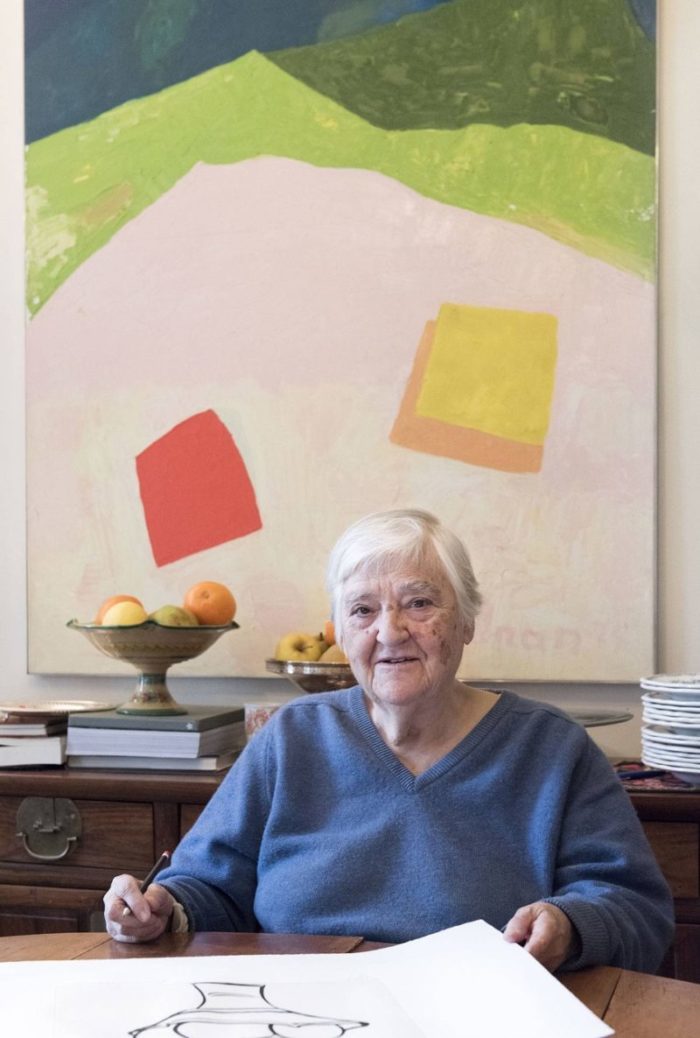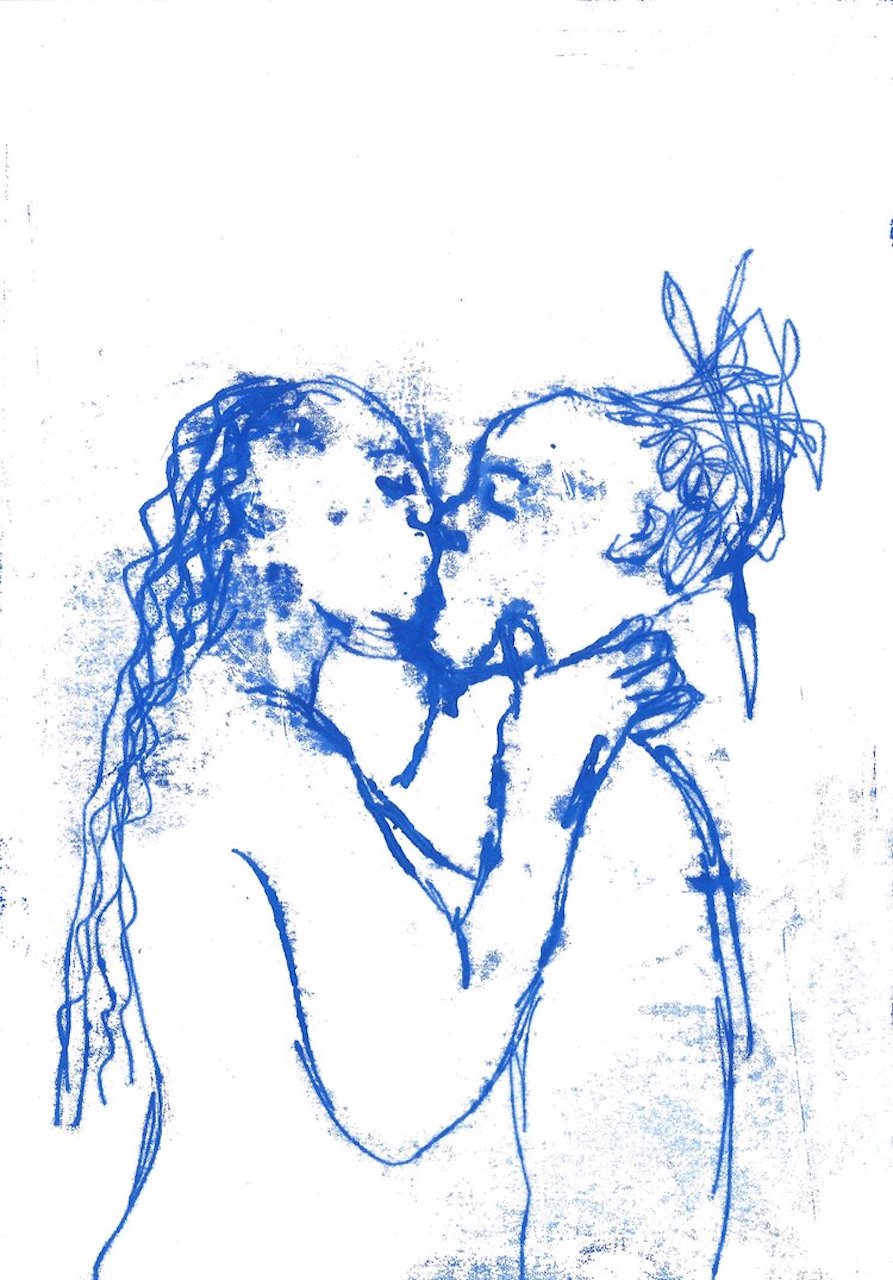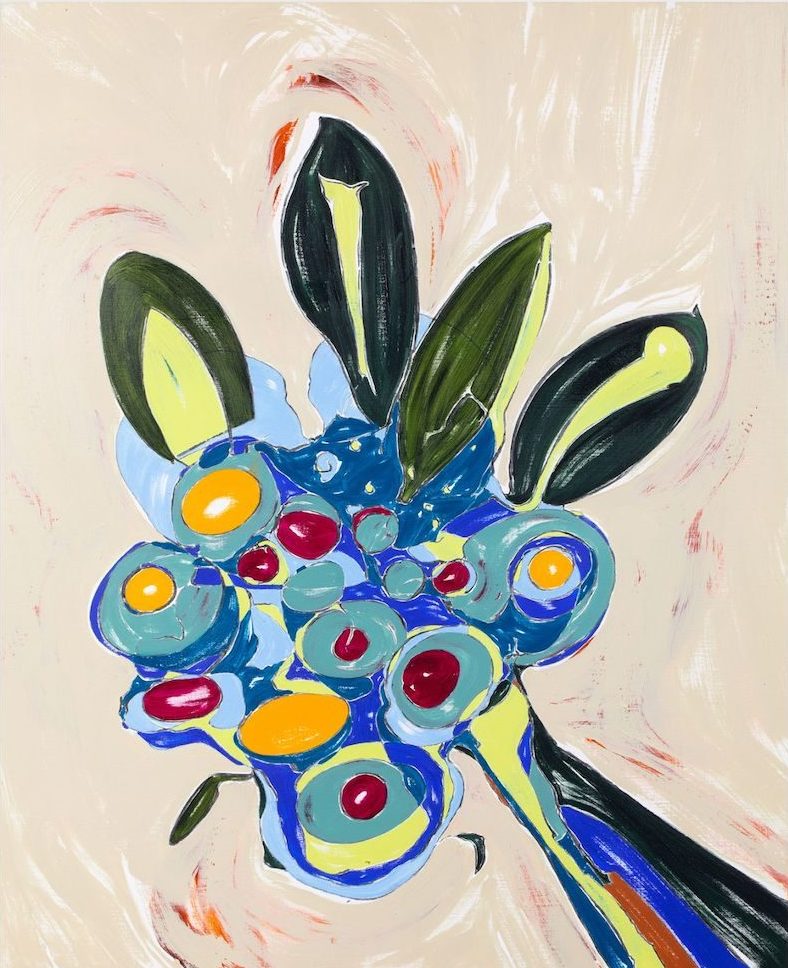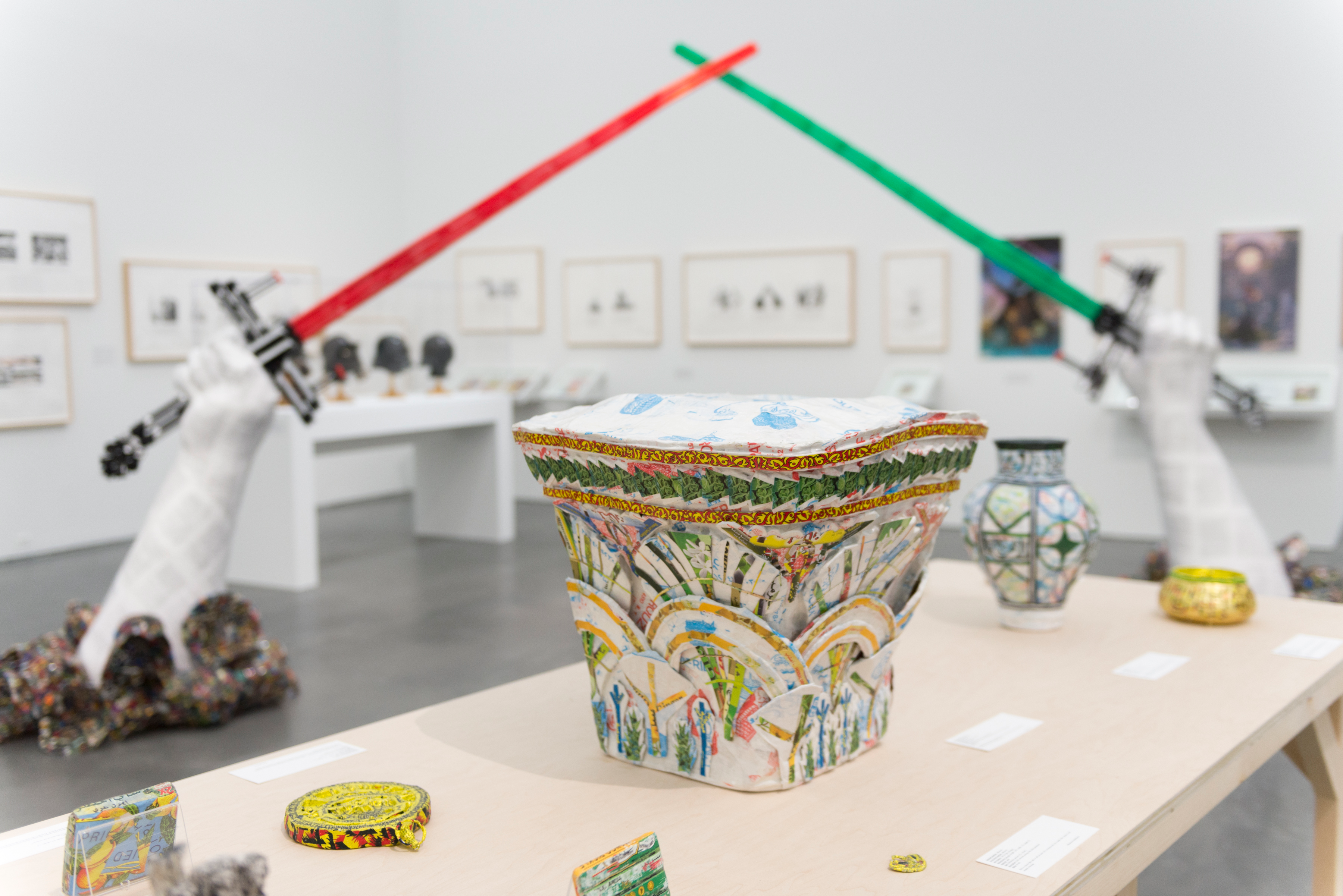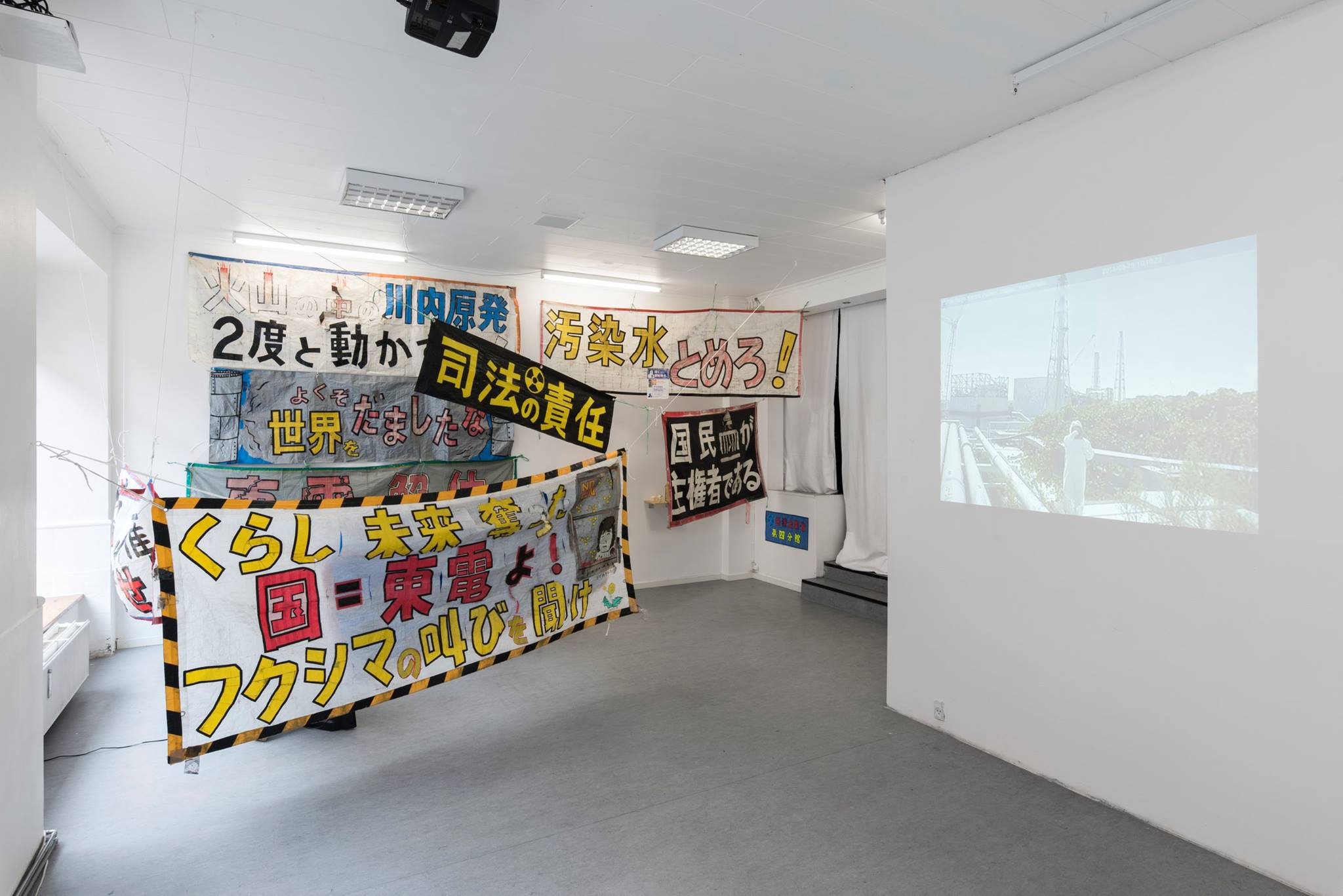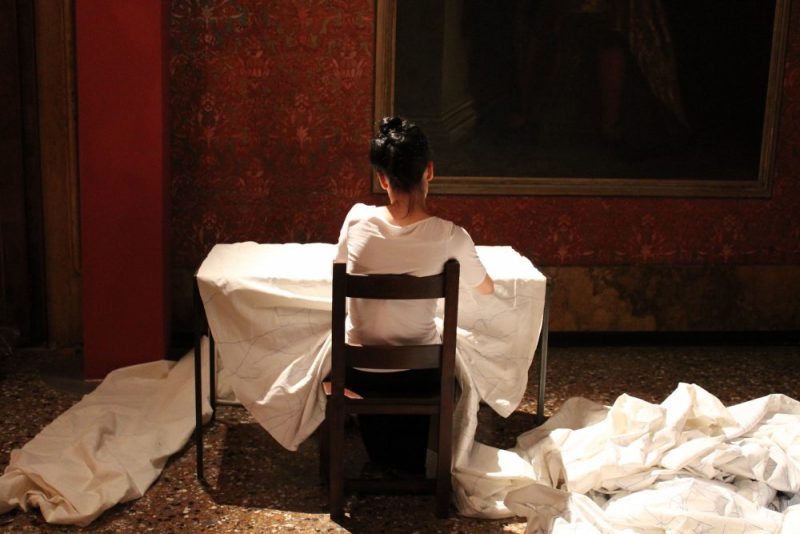The Weight of the Posthumous: A Review of Etel Adnan “Light’s New Measure” at the Guggenheim Museum
October 8, 2021 – January 10, 2022Guggenheim Museum1071 5th Ave, New York, NY 10128 Beyond any doubt, the recent passing of Etel Adnan (1925-2021) transformed the sense of her exhibition Light’s New Measure at the Guggenheim. What started as an exhibition of a living artist is now the retrospective of a historic figure, locating the show between two different times: the historical and the contemporary. However, the shift in meaning of the exhibition due to the interruption of death is not the only reason that Light’s New Measure is special. The curators Katherine Brinson and Lauren Hinkson not only brilliantly establish a relation to the exhibition Vasily Kandinsky: Around the Circle (which opened simultaneously on October 8), but also emphasize Etel Adnan’s admiration for the Guggenheim building’s designer, Frank Lloyd Wright. A wall text in the exhibition reveals that Adnan, who originally aspired to become an architect, was fascinated with the influence of Mesopotamian forms on Wright’s architectural practice. The Guggenheim, which she imagined as a contemporary version of Babel Tower, provides the unique opportunity …

